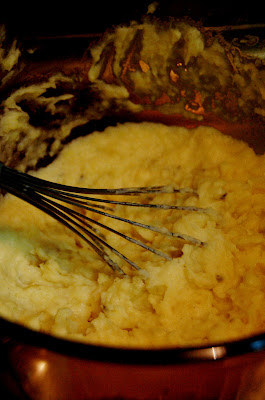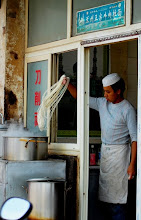Taken from http://www.answers.com/topic/condiment
The term "condiment" originally meant seasoned, pickled, or preserved foods in Latin. Today, the word is broadly applied to a variety of foods, including spices, herbs, sauces, seasonings, flavorings, colorings, and even beverages, such as tea, coffee, and alcoholic drinks. A more narrow definition is that a condiment is a substance added to other foods for the purpose of giving a strong flavor or relish. Condiments usually appear on the table and are intended for individual use by the diner.
Condiments fall into five nonexclusive categories. The first is salt, the earliest and most important condiment employed by humans. In addition to its ubiquitous presence on tables around the world, salt is often a constituent ingredient in many other condiments. It is employed on a wide range of foods, including vegetables, meats, fish, and poultry. Salt is also occasionally shaken on beer and sprinkled on watermelons. Salt is a major preservative and today is commonly found in most processed foods.
The second most common condiment is sugar or other sweeteners, such as honey or maple syrup. Sugar and honey are used directly in everything from bitter beverages, such as tea, coffee, and chocolate, to a topping for breakfast cereals. Sugar and honey are also employed in making other condiments such as jams, jellies, preserves, and marmalades, and are used extensively on bread, rolls, scones, and in pastries. Maple syrup is commonly used on pancakes.
A third category of condiments is pickled foods, which date back to the ancient world in Europe as well as Asia. Common pickled foods used as condiments today include ginger (Japan), chutney (South Asia), and cucumbers (dill, butter, and gherkins). Almost all vegetables have been pickled and used as condiments in some form. They are served whole, in slices, or diced in a relish. Sliced and diced pickles are frequently used on sandwiches.
Spicy and Hot Condiments
A fourth condiment category are those spicy or hot foods, such as black pepper, chili pepper, mustard, garlic, horse-radish, and onions. A product of Asia, black pepper (Piper nigrum) is commonly served from shakers throughout the Western world in a dried state and is usually ground into coarse or fine state before consumption. Like salt, pepper is used in savory dishes. It is also a base ingredient in some pepper sauces. Chili pepper (Capsicum), a product of the Americas, is employed in dried form on diverse foods.
Fresh chopped chili peppers are also the base ingredient in a number of other condiments, including salsa. In pre-Columbian times, the Aztecs employed a number of sauces based on chili peppers along with tomatoes and ground pumpkin seeds. After the Spanish Conquest in 1521, fusion foods developed including salsas, which combined salt with ground tomatoes and chili peppers from the New World and vinegar from the Old World.
Tabasco sauce was an early American condiment based on chili pepper and vinegar. As Mexican cookery became an important food for mainstream Americans in the latter part of the twentieth century, salsas became an important part of cookery in the United States. The fresh salsa market exploded during the 1980s and continued to increase during the following decade. By the 1990s, salsa outsold ketchup.
Salsa is also used in making other condiments, such as guacamole, a combination of mashed avocados, salsa, onions, garlic, and other ingredients. Today, guacamole is served in Mexican restaurants and used as a dip for tortilla chips. Numerous other condiments serve as dips for potato and corn chips.
Mustard and Horseradish
In ancient Roman times, mustard was made from seeds of a variety of plants in the genus Brassica. The word originated in Latin and meant the "must" of new wine, which suggests that mustard seeds were combined with wine or vinegar. At an early date, mustard was disseminated throughout China, where it also became an important condiment in Chinese cookery.
The use of mustard survived the Middle Ages in Europe and was commonly employed in French and British cookery. Special dishes were developed for mustard's use as a table condiment. A major area of mustard production in France was the region around Dijon. Powdered mustard was commercialized in England and was produced in the United States by the mid-eighteenth century. The R. T. French Company began bottling a mild mustard in the United States about 1900. It was soon served on hot dogs and later hamburgers.
Horseradish (Armoracia rusticana), a product of western Asia, is a relatively recent addition to Western cookery. Pickled and ground, it is a highly pungent condiment used particularly with roast beef in England and other meats throughout Europe. In Japan, wasabi (Eutrema wasabi) serves a similar function for sushi.
Other Compound Sauces
The fifth and final condiment category is compound sauces, including ketchup, Worcestershire sauce, fish sauces, soy sauce, salad dressings, curries, and barbecue sauces. The earliest known compound sauces were made of fish. In widely separated regions, such as in the ancient Mediterranean and Southeast Asia, preservation of fish in a liquid form evolved.
In the ancient Mediterranean world, fish sauce called garum was initially made in the Greek communities along the Black Sea coast. It was heartily adopted by the Romans, who employed fish sauces lavishly on many dishes to enhance flavor. It was used as a cooking ingredient as well as a dip for fish and other foods at the table.
Fermented condiments were also developed in ancient China and Southeast Asia, where fish and other fermented sauces played significant culinary roles. By the seventeenth century, diverse sauces were manufactured throughout East and Southeast Asia. Today, China, India, and Japan produce small quantities of fermented fish sauces, but Southeast Asia remains the center of production and consumption. Beginning in the early twentieth century, authorities set standards for fermented fish sauce in French Indochina. These and subsequent standards formed the basis for commercial production. Fermented fish sauces, such as nam pla in Thailand, nuoc mam in Vietnam, tuk trey in Cambodia, ngan-pye-ye in Myanmar, budu in Malaysia, patis in the Philippines, and nam pa in Laos, continue to be very popular. These sauces are more than just flavor enhancers: they contain high levels of protein and other nutrients.
Another important Asian condiment was soy sauce. Soybeans had been converted into a sauce at least since 200 B.C.E. in China. It spread quickly throughout East and Southeast Asia. Although soy sauce production is believed to have started in China, eventually Japan became a major producer. Its popularity was spread by Buddhists, who used it as an alternative to fish sauce.
Ketchup
Another fermented East Asian and Southeast Asian sauce was kê-tsiap, which in the Amoy dialect of Chinese meant "the brine of pickled fish." The British encountered these sauces in Indonesia in the late seventeenth century. In the late seventeenth and early eighteenth centuries, kecap simply meant sauce, and usually referred to fermented black soybeans with a roasted cassava flour. The English word "ketchup" derived from the Indonesian word kecap. Anchovies were an important ingredient in early English ketchups. Although anchovies are no longer an ingredient in ketchup, anchovies were incorporated into several commercial brand-name sauces and relishes that were created during the nineteenth century, including Harvey's Sauce, Gentleman's Relish, and Lea & Perrins Worcestershire Sauce, which still feature anchovies as ingredients today.
Like fish sauces, ketchups were used in cooking to produce particular colors, consistencies, or tastes and were used as condiments on fish, fowl, and meats. Many types of ketchup were based on other products. Among the more important were walnut, mushroom, and later tomato ketchup, which became particularly popular in the United States. As the price for tomato ketchup decreased and became accessible to all Americans at the end of the nineteenth century, tomato ketchup became America's national condiment and other types of ketchup almost disappeared. Tomato ketchup has expanded beyond the English-speaking countries and today is manufactured in more than seventy countries and is consumed to some degree in nearly every country.
Tomato ketchup has also inspired other condiments. In the Philippines, banana ketchup, a takeoff on jufran and mafran, traditional Philippine hot and spicy banana-based condiments, is produced. Tomato ketchup was also used to make other condiments. For instance, many recipes for barbecue sauce contain ketchup. While barbecue has a long history, the first actual use of the term barbecue sauce does not appear until the mid-twentieth century.
Mayonnaise and Other Condiments
Mayonnaise was based on aioli, a Spanish sauce that combined olive oil and egg that probably dated back to Roman times. In the seventeenth century, the French took this basic notion, refined it, and gave the world a unique sauce that they called mayonnaise. It could stand alone or could be employed to make other sauces. Mayonnaise, one of the French "mother sauces," was exported to England and to America, where it was used as a sandwich spread in the nineteenth century. Around the turn of the century, it was first manufactured as a commercial product in America.
Mayonnaise was initially used on salads or to make salad dressings and other condiments. For instance, commercial tartar sauce is composed of mayonnaise, relish, and spices. Salad dressings have been consumed since ancient Roman times. Commercial dressings today include ranch, italian, blue cheese, thousand island, french, and caesar.
The rapid success of many condiments can be attributed directly to the globalization of American fast food establishments. For instance, ketchup, mustard, pickles, pickle relish, and mayonnaise are spread on hot dogs, hamburgers, and french fries.
Bibliography
Costenbader, Carol W. The Well-Stocked Pantry; Mustards,Ketchups & Vinegars; Dips & Dressing, Sauces & Oils. Pownal, Vt.: Storey Communications, 1996.
Smith, Andrew F. Pure Ketchup: A History of America's NationalCondiment, with Recipes. Columbia: The University of South Carolina Press, 1996.
Solomon, Jay. Condiments! Chutneys, Relishes and Table Sauces! Freedom, Calif.: Crossing Press, 1990.
Thudichum, J. L. W. The Spirit of Cookery: A Popular Treatise on the History, Science, Practice and Ethical and Medical Import of Culinary Art. London and New York: Frederick Warne, 1895.
—Andrew F. Smith










